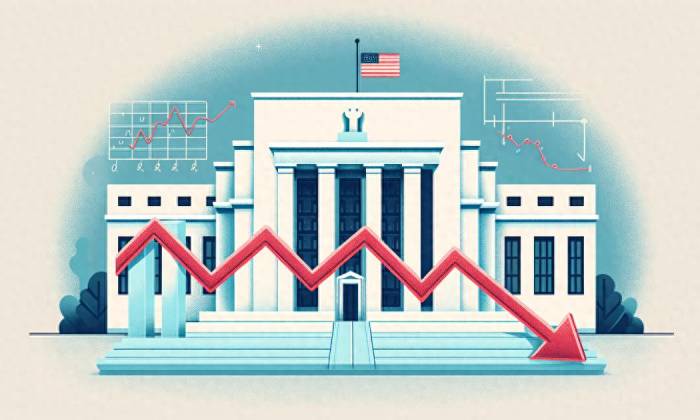Fed Officials Begin to Sidestep December Guidance
The financial landscape is a complex tapestry, woven together by the interlacing strings of monetary policy, economic indicators, and geopolitical developments. In recent discussions held by officials from the Federal Reserve, a cautious tone has been the prevailing sentiment, particularly as the institution gears up for its upcoming policy meeting in mid-December. The stakes are high, as the decisions made could play a pivotal role in shaping the economic landscape for months to come.
As the officials conferred, it became evident that they shared a unified belief: inflation, which has been a significant concern for policymakers, appears to be on a downward trajectory towards the ultimate target of 2%. This consensus was articulated by several high-ranking members, including Mary Daly, the President of the San Francisco Federal Reserve Bank, and Austan Goolsbee, the President of the Chicago Federal Reserve Bank. Both officials underscored the importance of recalibrating monetary policy in response to evolving economic conditions and emphasized the necessity of an open mindset during discussions. Such a perspective allows them to adapt to an economy that is in constant flux, where decisions must be made with foresight and caution.
Interestingly, while there is an expectation among the Federal Reserve officials for the possibility of rate reductions in the coming year, there remains a reluctance to commit to a specific course of action for the impending December meeting. This reflects a broader trend among policymakers who have refrained from providing explicit guidance in light of the unpredictable nature of the economic environment. Unfolding events, such as changes in trade policies, tax reforms, and immigration regulations, could potentially reshape the economic outlook significantly.
Advertisement
The observation made by Governor Philip Jefferson, who spoke during the same week, pointed to the delicate balancing act the Federal Reserve must perform: refraining from reacting prematurely to unimplemented policies. His comments further accentuated the growing anticipation of forthcoming data releases, which are seen as critical for informing decisions that will be made by the Fed.
In the immediate future, a series of key reports will be unveiled, including the crucial non-farm payrolls report, set to be released on Friday, followed by the Consumer Price Index (CPI) data for November the following Wednesday. These insights will provide a clearer picture of the labor market and inflationary pressures, further informing the Federal Reserve's strategy going into the final policy meeting of the year.
The financial markets have been particularly sensitive to these developments, with heightened interest in the comments made by Federal Reserve officials. Notably, Governor Christopher Waller has diverged slightly from his colleagues, expressing a clearer inclination toward a rate cut this month based on his analysis of current economic conditions and market trends. His remarks will be closely scrutinized as they may signal a shift in the Federal Reserve's policy stance.
This heightened anticipation culminates in a significant moment scheduled for Thursday at 2:45 AM Beijing time, where Federal Reserve Chair Jerome Powell will deliver a speech. Given the timing of this address, occurring just before the crucial December meeting, market participants will be keen to glean insights from Powell’s comments. The tone and subtleties of his speech could potentially trigger considerable reactions across global financial markets.
The current atmosphere among investors suggests a high likelihood that the Federal Reserve will enact a 25 basis point rate cut in its December meeting, with estimates suggesting approximately a 70% probability. If this prediction materializes, it could see the policy interest rate adjusted to a range of 4.25%-4.50%. Additionally, many market analysts are banking on the potential for a couple more rate cuts before the end of next year, aligning with observations of trends in the economic landscape and macroeconomic data. Nonetheless, it is essential to note that this projected pace of rate reductions is notably slower in comparison to the expectations set forth by Federal Reserve officials during the September meeting.
The upcoming meeting, due to take place during the final leg of the year, is set to be a significant milestone. As officials reassess economic conditions and update their forecasts for interest rate paths, markets are bracing for new fluctuations. Investors and analysts will undoubtedly be glued to the unfolding situation, as the decisions made during this period could reverberate through the financial ecosystem and impact various sectors, including housing, consumer spending, and investment strategies.

To comprehend the nuances of the Federal Reserve's actions, one must consider the multitude of variables influencing policy decisions. Economic indicators often serve as a guide, but external factors such as global economic conditions, political developments, and public sentiment towards inflation play equally crucial roles. The interplay of these elements will continue to shape the discourse surrounding monetary policy, as the Federal Reserve navigates through unchartered waters in its efforts to promote economic stability and sustainable growth.
Ultimately, the decisions made in the Federal Reserve's December meeting could signal an important transition. With inflation moving closer to target and economic resilience demonstrated through robust labor markets, officials are confronted with the challenge of determining the appropriate stance moving forward. The overarching question remains: how will they balance the need to support economic growth while also ensuring inflationary pressures remain in check? As the world watches intently, the forthcoming meetings and statements from key Federal Reserve figures are poised to elucidate these pressing inquiries – shaping not only the U.S. economy but also the global financial landscape in the process.
Comment